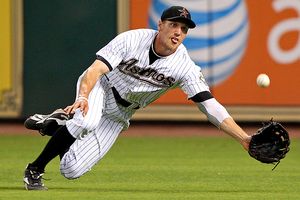elpablo21
Supporter
- 102,244
- 181,735
- Joined
- Feb 11, 2008
MLB Tonight > Baseball Tonight
Agreed
Lee/Beckett
Price/Cueto
tonight
Add Hanson/Pineda

Follow along with the video below to see how to install our site as a web app on your home screen.

Note: this_feature_currently_requires_accessing_site_using_safari




Originally Posted by CP1708
Cliff Lee's June is the pitching version of Sammy's June in 98.
5-0, 42 innings pitched (out of 45 possible), 1 run allowed 29 K's, 8 BB's and 21 hits allowed.
Incredible. Now Halladay prolly gonna try and beat that in July.
Originally Posted by CP1708
Cliff Lee's June is the pitching version of Sammy's June in 98.
5-0, 42 innings pitched (out of 45 possible), 1 run allowed 29 K's, 8 BB's and 21 hits allowed.
Incredible. Now Halladay prolly gonna try and beat that in July.
20 HROriginally Posted by wildKYcat
Originally Posted by CP1708
Cliff Lee's June is the pitching version of Sammy's June in 98.
5-0, 42 innings pitched (out of 45 possible), 1 run allowed 29 K's, 8 BB's and 21 hits allowed.
Incredible. Now Halladay prolly gonna try and beat that in July.
that's *%%%*+! ridiculous.
what Sammy's June '98 *#'s look like?
20 HROriginally Posted by wildKYcat
Originally Posted by CP1708
Cliff Lee's June is the pitching version of Sammy's June in 98.
5-0, 42 innings pitched (out of 45 possible), 1 run allowed 29 K's, 8 BB's and 21 hits allowed.
Incredible. Now Halladay prolly gonna try and beat that in July.
that's *%%%*+! ridiculous.
what Sammy's June '98 *#'s look like?


 , 1.88 E-X
, 1.88 E-X , 1.73 E-X
, 1.73 E-X , 1.88 E-X
, 1.88 E-X , 1.73 E-X
, 1.73 E-X






















